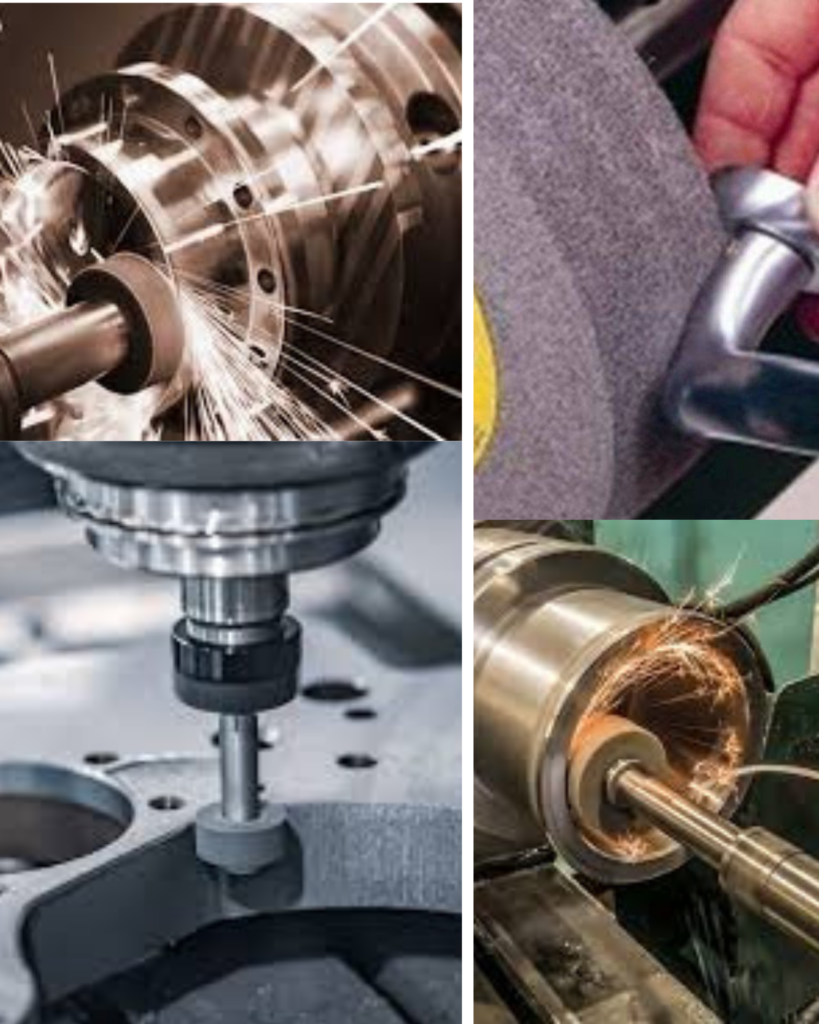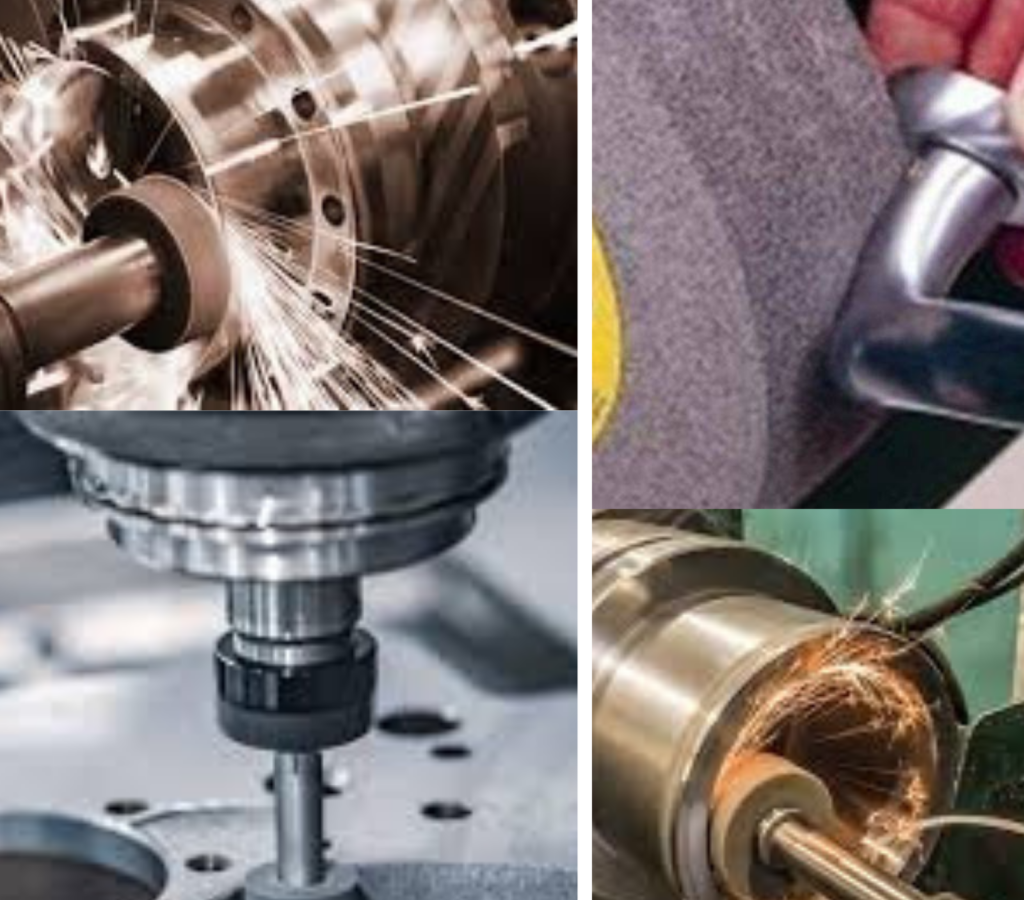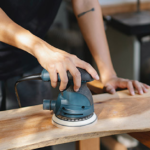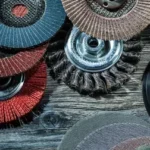
Abrasive tools are essential components in a wide range of industries, from woodworking and metalworking to automotive repair and home improvement. For beginners, understanding the different types of abrasive tools and their applications can significantly enhance the quality and efficiency of your projects. At M/s Sandpaper Rodiez, we specialize in customizing high-quality abrasives to meet specific client needs, offering expert advice and solutions for all your abrasive tool requirements. In this comprehensive guide, we’ll introduce you to common abrasive tools, their functions, and how they can be used effectively in various applications.
1. Introduction to Abrasive Tools
Abrasive tools are designed to smooth, polish, or shape surfaces through friction. They are crucial for tasks such as material removal, surface preparation, and finishing. The choice of abrasive tool depends on the material being worked on, the specific task, and the desired finish.
1.1 What Are Abrasive Tools?
Abrasive tools are tools that use abrasive materials to grind, sand, or polish surfaces. These tools come in various forms, including sandpaper, grinding wheels, and abrasive pads. Each type of abrasive tool has its unique features and is suited to different tasks and materials.
1.2 Why Understanding Abrasive Tools Is Important
For beginners, understanding abrasive tools can make a significant difference in the outcome of your projects. Choosing the right tool for the job ensures that you achieve the desired finish efficiently and effectively. It also helps prevent potential damage to materials and reduces the need for rework.
2. Types of Abrasive Tools
There are several types of abrasive tools, each designed for specific applications. Understanding these tools and their uses is essential for selecting the right one for your needs.
2.1 Sandpaper
Sandpaper is one of the most common abrasive tools, used for a wide range of tasks. It consists of abrasive grains attached to a flexible backing material, such as paper or cloth. Sandpaper is available in various grit sizes, ranging from coarse to fine, allowing for different stages of material removal and finishing.
- Applications: Sandpaper is used for smoothing wood, metal, plastic, and other materials. It is ideal for removing old finishes, preparing surfaces for painting or staining, and achieving a smooth, polished surface.
- Types: Sandpaper comes in different grit sizes, each suited for specific tasks. Coarse grits (e.g., 40-60) are used for heavy material removal, medium grits (e.g., 80-120) for intermediate sanding, and fine grits (e.g., 150-220) for final finishing.
2.2 Grinding Wheels
Grinding wheels are rigid abrasive tools used for heavy-duty tasks such as grinding and shaping metal. They consist of abrasive grains bonded together to form a solid wheel. Grinding wheels come in various shapes and sizes, including flat, cylindrical, and cup-shaped.
- Applications: Grinding wheels are used for tasks such as removing excess material, shaping metal parts, and sharpening tools. They are essential in metalworking and fabrication.
- Types: Different grinding wheels are available for specific applications, including general-purpose wheels, specialized wheels for cutting or grinding specific metals, and wheels designed for particular machines.
2.3 Abrasive Pads
Abrasive pads are flexible tools made from non-woven fibers impregnated with abrasive materials. They are used for surface preparation and finishing tasks where flexibility and conformability are required.
- Applications: Abrasive pads are used for removing rust, old paint, and other surface contaminants. They are also used for light sanding and finishing tasks.
- Types: Abrasive pads come in various grades, from coarse to fine, and are available in different forms, such as hand pads and pad discs.
2.4 Cut-Off Wheels
Cut-off wheels are a type of bonded abrasive used for cutting through metal and other hard materials. They are designed to provide precise, clean cuts and are commonly used in metalworking and automotive applications.
- Applications: Cut-off wheels are used for tasks such as cutting metal pipes, sheet metal, and other materials. They are essential for many repair and manufacturing processes.
- Types: Cut-off wheels come in different sizes and thicknesses, depending on the material being cut and the machine being used.
2.5 Polishing Pads
Polishing pads are used for achieving a high-gloss finish on various surfaces. They are typically used in conjunction with polishing compounds to enhance the surface’s appearance.
- Applications: Polishing pads are used for final finishing tasks, such as buffing automotive paint, polishing metal surfaces, and achieving a mirror-like finish.
- Types: Polishing pads come in various materials, including foam, microfiber, and wool, and are available in different grades for specific polishing tasks.
3. Choosing the Right Abrasive Tool
Selecting the right abrasive tool is crucial for achieving the desired results. Consider the following factors when choosing an abrasive tool for your project:
3.1 Material Being Worked On
Different materials require different types of abrasives. For example, wood may require a different abrasive compared to metal or plastic. Ensure that the abrasive tool you choose is suitable for the material you are working on to achieve optimal results.
3.2 Task at Hand
The specific task you are performing will influence the type of abrasive tool you need. For heavy material removal, a coarse abrasive tool may be required, while for fine finishing, a finer abrasive tool will be more appropriate.
3.3 Desired Finish
Consider the finish you want to achieve. Coarser abrasives are used for initial material removal and shaping, while finer abrasives are used for polishing and achieving a smooth, high-quality finish.
4. Tips for Using Abrasive Tools Effectively
To get the most out of your abrasive tools and achieve the best results, follow these expert tips:
4.1 Use the Correct Grit Size
Using the right grit size is essential for achieving the desired finish. Start with a coarser grit for material removal and gradually move to finer grits for smoothing and polishing. This progressive approach ensures a high-quality finish and reduces the risk of surface damage.
4.2 Apply Consistent Pressure
Apply consistent pressure when using abrasive tools to avoid uneven surfaces and achieve a uniform finish. Too much pressure can cause the abrasive to wear out quickly, while too little pressure may result in ineffective material removal.
4.3 Keep Abrasive Tools Clean
Regularly clean abrasive tools to remove dust and debris that can clog the abrasive surface. Keeping tools clean helps maintain their effectiveness and extends their lifespan.
4.4 Follow Manufacturer’s Instructions
Always follow the manufacturer’s instructions for using and maintaining abrasive tools. This ensures safe operation and optimal performance.
5. Customizing Abrasives for Your Needs
At M/s Sandpaper Rodiez, we understand that one size does not fit all when it comes to abrasive tools. That’s why we provide bespoke solutions designed to meet your unique requirements. Whether you’re working on a unique project or require specialized abrasives, we can provide high-quality, customized abrasives that meet your requirements.
5.1 Tailoring Grit Size and Type
We can customize the grit size and type of abrasives to suit your project, ensuring optimal performance and results.
5.2 Selecting the Right Backing Material
We offer a range of backing materials, including paper, cloth, and sponge, to match the specific needs of your project.
5.3 Optimizing for Specific Applications
Our customized abrasives are designed to work seamlessly with your tools and machines, enhancing efficiency and effectiveness.
6. Conclusion
Understanding common abrasive tools and their applications is essential for achieving high-quality results in your projects. Whether you’re a beginner or an experienced professional, choosing the right abrasive tool and using it effectively can significantly impact the outcome of your work.
At M/s Sandpaper Rodiez, we are committed to providing the best abrasive solutions tailored to your specific needs. Visit our website at Sandpaper Rodiez to explore our range of customizable abrasives and discover how we can help you achieve professional results in all your projects.
For any questions or to discuss your abrasive needs, contact us at Plot No 93, Main Chowk, Samaypur, Delhi – 110042. Let us assist you in finding the perfect abrasive tools for your next project and ensure you achieve the best results every time.



